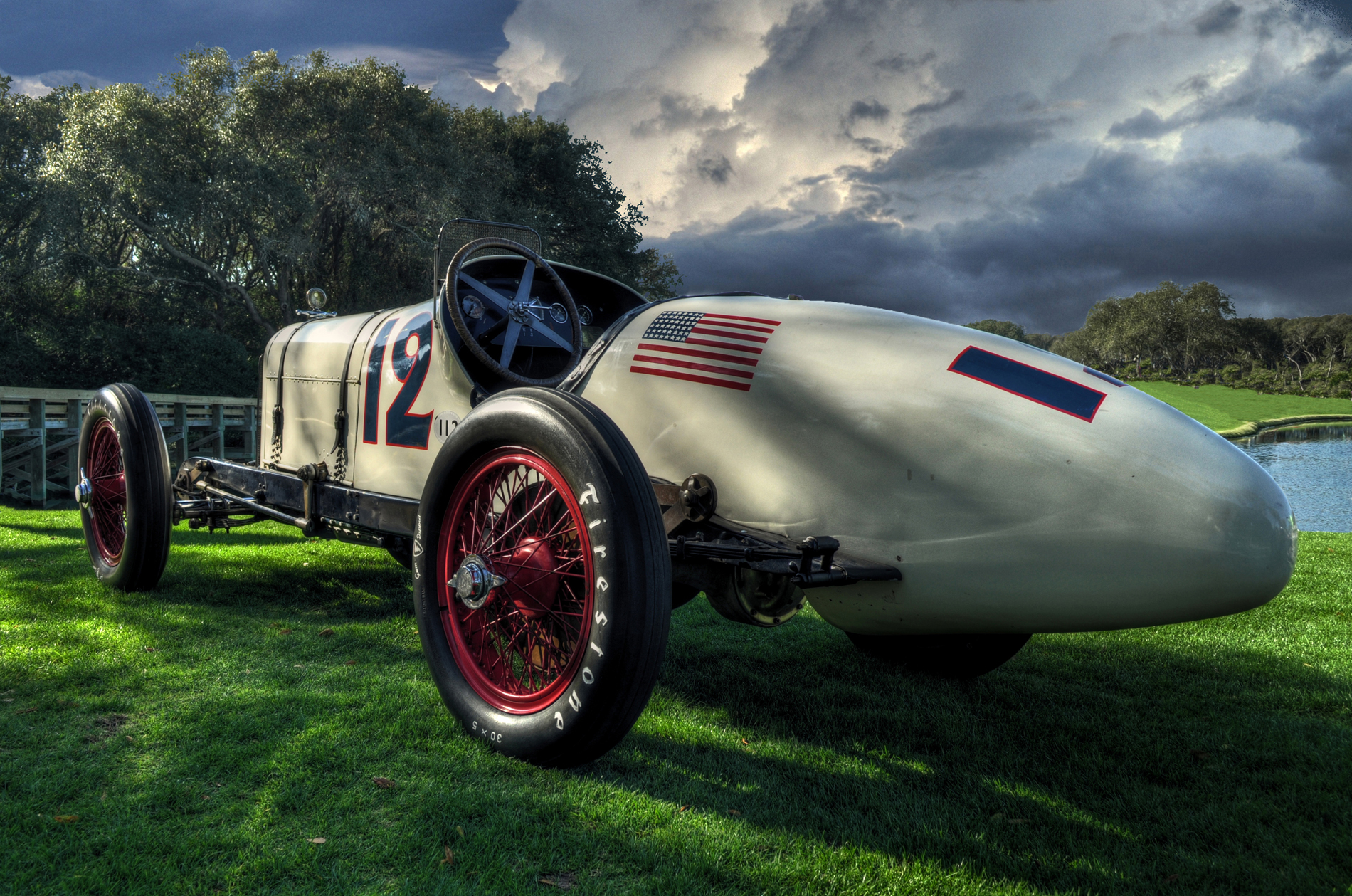
This 1920 Duesenberg Special Number 12 won in the 1921 French Grand Prix and also the 1922 Indy 500 with a Straight Eight Miller engine at a record 94.484 mph - first ever to do it from the pole position and is also the first race car to have four wheel hydraulic brakes.
The 1920 Duesenberg Special Number 12 stands as a remarkable example of early 20th-century automotive engineering and racing prowess. Its advanced design, powerful supercharged engine, and impressive performance on the racetrack highlight the Duesenberg brothers' innovative approach and their significant contributions to the automotive world. This car remains an iconic piece of automotive history, celebrated by enthusiasts and collectors for its historical significance and engineering excellence.
Overview
- Production Year: 1920
- Manufacturer: Duesenberg Motors Company
- Class: Racing car
- Body Style: Open-wheel race car
Design and Specifications
- Engine:
- The Duesenberg Special Number 12 was powered by an inline-eight engine, a design that was advanced for its time.
- The engine was supercharged, enhancing its power output significantly.
- It produced around 183 horsepower, an impressive figure for the early 1920s, contributing to its competitive edge in racing.
- Transmission:
- The car featured a manual transmission, likely a 3-speed gearbox, providing the driver with control over its substantial power.
- Chassis:
- The chassis was constructed using lightweight materials to optimize performance, emphasizing rigidity and strength for durability on the track.
- Suspension:
- The front suspension utilized a solid axle with semi-elliptic leaf springs.
- The rear suspension also used a solid axle with semi-elliptic leaf springs, providing a balance between comfort and performance.
- Brakes:
- Braking was achieved through mechanical drum brakes, which were standard for the period, offering adequate stopping power for the car's performance.
Performance
- Top Speed: The Duesenberg Special Number 12 could achieve speeds of around 130 mph (209 km/h), making it one of the fastest cars of its era.
- Acceleration: The supercharged engine allowed for rapid acceleration, crucial for competitive racing.
- Handling: With its lightweight chassis and advanced suspension setup, the car offered excellent handling characteristics, making it a formidable competitor on the racetrack.
Design Features
- Bodywork:
- The car's body was designed for aerodynamic efficiency, featuring a streamlined shape that minimized drag and maximized speed.
- It had an open-wheel design typical of racing cars of the time, with a narrow, low-slung profile.
- Interior:
- The interior was minimalistic, focused entirely on functionality for racing, with essential controls and instrumentation within easy reach of the driver.
- The seating was designed to keep the driver secure and comfortable during high-speed racing.
- Aerodynamics:
- The aerodynamic design was a key feature, with smooth lines and a focus on reducing wind resistance, helping the car achieve its high top speeds.
Legacy and Historical Significance
- Historical Significance:
- The 1920 Duesenberg Special Number 12 is a testament to the Duesenberg brothers' engineering prowess and their contribution to early automotive racing.
- It represented the peak of racing technology in its time, showcasing innovations that would influence future automotive designs.
- Racing Success:
- This car participated in various racing events and is particularly noted for its performance in the Indianapolis 500, where Duesenberg cars were highly competitive.
- The successes of the Duesenberg Special Number 12 helped cement the Duesenberg name in the annals of motorsport histor
You may purchase a print of the 1920 Duesenberg Special Number 12 in our dElegance 2011 online gallery.

